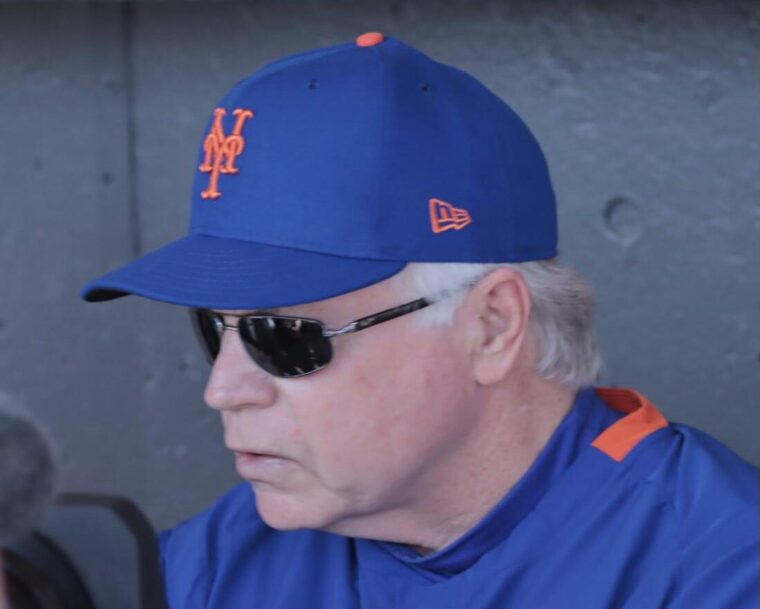
Photo by Ed Delany of MMO
For fans of the New York Mets, seeing players getting hit by pitches has become all too common in the 2022 season. As a team, the Mets have been hit by pitches the most the major leagues, with 50 going into action on June 21 (on pace to set a Major League Baseball record). The Baltimore Orioles are a fairly close second with 42 HBP, followed by the Seattle Mariners (39) and the Cincinnati Reds and San Francisco Giants (35 each).
Among the Mets, Brandon Nimmo has been hit the most (8), followed by Mark Canha and Pete Alonso (7 each), and Francisco Lindor (6). Some the Mets’ hit batsmen have been downright scary, with Alonso being hit twice in the head, and Lindor taking one off his batting helmet. Manager Buck Showalter has verbally and non-verbally shown his frustration over the situation, stating at one point that intent does not matter when players are being drilled and risking serious injury.
Interestingly, batters being hit by pitches is not up over 2021 across Major League Baseball. Last season, there were 2,112 batters hit by pitches, and thus far in 2022, 803 batters have been hit, which projects to roughly 1,915 over a full season. However, MLB has decided to take an action to address one of the possible issues of hit batters–the ability of the pitcher to grip the baseball for optimal control. The action going into effect immediately will require uniform “mudding” of baseballs by all 30 teams.
In an article on ESPN.com, Jesse Rogers explains how the mudding has traditionally worked.
In past years, muddying involved clubhouse attendants preparing baseballs by rubbing Delaware River mud — which comes in a can — days before each game. Moving forward, they’ll be required to continue to muddy balls on game day only and all with the same technique.
What will that technique be? Rogers provides the details:
- All baseballs to be used in a specific game must be mudded within 3 hours of all other baseballs being used in that game.
- Once the muddying process is completed, all balls should be placed back in the Rawlings boxes with dividers, and the boxes should then be placed in the humidor. In the past, balls were allowed to go directly into the humidor.
- Each team will be provided a poster showing the acceptable range of appearance for a mudded baseball. (dark/light)
- All game balls must be stored in humidors for a minimum of 14 days before being taken through the muddying process.
Time will tell if a standardized mudding process will address control issues, and ultimately the number (and severity) hit batters. The ultimate goal will be to eliminate the types of frightening scenes the Mets experienced in Washington and St. Louis, and this one that took place in Seattle very recently with Justin Upton in the batter’s box.
Whether it’s because pitchers are throwing harder, the ban on “sticky stuff”, batters leaning into pitches without fear, or the modifying of the baseball (lowering of the seams), MLB had to do something to try to protect its players from career (and possibly life) altering injuries.
The Mets will definitely appreciate MLB’s efforts. They have been relatively lucky to avoid a devastating injury due to a hit batsman. That luck will likely run out, hopefully not before the enhanced mudding process takes its desired effect.















